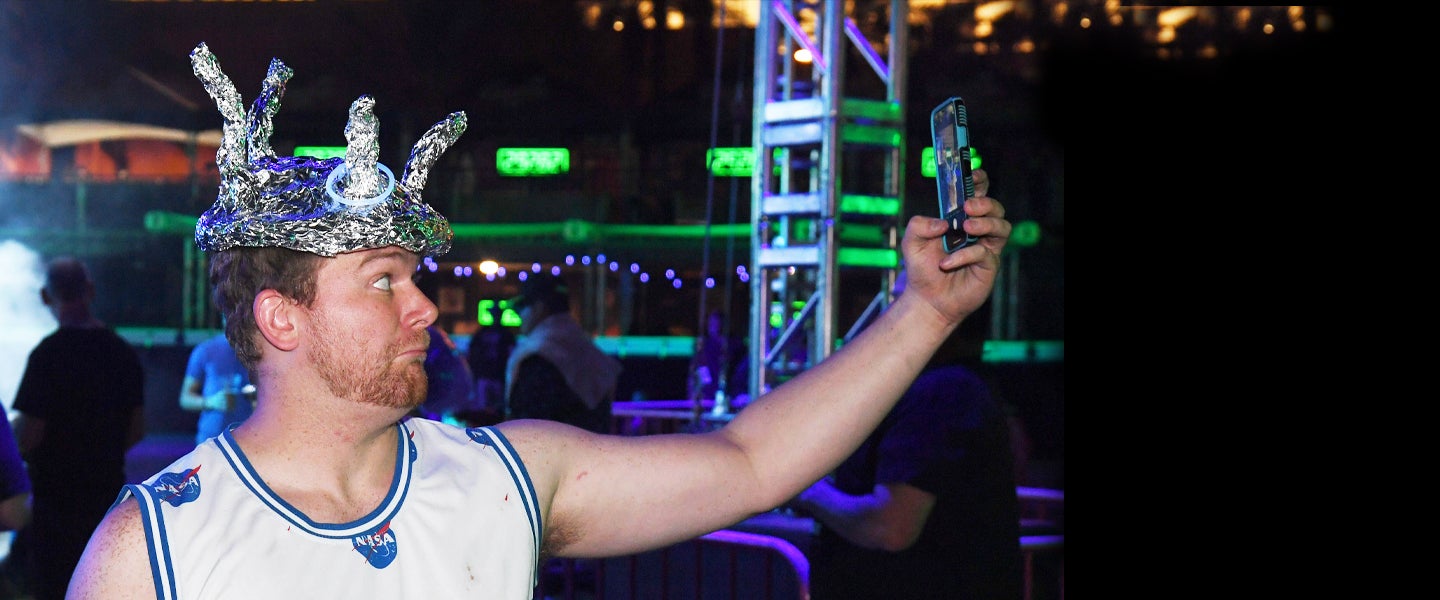Like the Matrix code scrolling down a monitor, the five little pixelated bars in the corner of our phones show us our connection to everyone else — a symbolic representation of network threads that are both invisible and indelible.
But also like the Matrix code, the icon holds illusions. Sometimes, those five white bars speak lies, showing strength where there is no connection at all. Other times, they disappear, one by one, stranding you in digital hinterlands.
All you wanted to do is Snapchat this John Mayer solo to your best friend. Or call your roommate to yell about a last-second touchdown by the Vikings. Or just text a picture of a Kardashian in the wild to your mom. Or tweet a video of rude cops at a protest. And yet, there you stood, confused and frustrated as your phone failed to get a signal again.
The year 2019 may have been blessed with many things — Salami Cat, Lizzo, a $1,400 iPhone — but a major leap forward for cell-signal technology was nowhere to be seen. To me, that’s kind of surprising. I mean, we have little robot cheetahs that can do backflips and AI that’s beating human Wall Street dumdums at their own game, but I can’t get solid reception at a friggin’ concert or a hockey game?
The big problem is that large, dense crowds are the perfect weapon to jumble cell towers, which receive data from phones and send it back out. Too many cell phones means too many signals flying at an antenna, which can overload the network and effectively shut people out. This is why you can “have” four or five bars but get jammed on a text. “Your phone knows it’s there but doesn’t know how to use it,” Don Bowman, a networking equipment expert, told the Associated Press back in 2016. “You’ll have the bars, but it won’t seem to connect.”
Most modern arenas and stadiums have upgraded their systems by installing an array of small cell antennas to improve connection quality. But the second hurdle comes with the fact that we’re now sending way more data-intensive content, like photos and video, than ever before. Plus, smartphone ownership has jumped from 35 percent to 81 percent since 2011. So it’s not just about how many signals are competing for access; more bandwidth usage means slower speeds for everyone, too. (In fact, the rise of unlimited data plans has actually made this worse.)
Fixing the problem isn’t as easy as just installing a bunch of cell towers and small antenna units everywhere either. Verizon and AT&T spent millions upgrading the infrastructure around Donald Trump’s inauguration ceremony, yet people reported the same ol’ problems with connectivity on the day.
That said, there’s some fascinating experiments happening with drone-mounted antenna, which were used in Puerto Rico in the aftermath of Hurricane Maria to provide communication and at large recreational events with success. Similarly, our actual phones may soon replace cell towers. Experts like Parallel Wireless founder Steve Papa say a device-to-device network is possible and inevitable, with benefits including fewer dropped calls, less interference and smaller coverage holes. “We’re just on the cusp of chips coming out where a $300 chip can power an entire cell tower. When you get that far, it’s not that much further to a scenario where when you’re finished with your cellphone, you can hang it on the wall and it adds to the cellular network,” Papa told CNBC.
This could be the next major evolution in cell phone tech, and it would bring massive benefits — just imagine the security of knowing our cell network will work in the aftermath of a natural disaster as long as we turn the phones on.
But, for just a second, let’s take a moment to cherish how Instagram pooping out on you at the club actually made you be a little more… in the moment. There’s a reason why we so often fetishize the experience of becoming disconnected, whether it’s voluntarily or suddenly, without warning. I can’t count the number of times that I tried sending a video at a college football game or dance party, poking at my screen with indignant annoyance before giving up on the damn thing entirely for the rest of the night. I, and you, probably benefited from that taste of a time when pulling your cell phone out while having fun made no sense. And, besides, all those big private venues collect your data to sell to the highest bidder (as does your carrier, to be fair). It’s not much of a stretch to argue that being disconnected is good, actually.
Not satisfied?
You can always try signal-testing apps so you can pinpoint where to find that sweet, sweet coverage, or do research on what carrier provides the fastest, broadest network. Perhaps the best lifehack I’ve found is to disable LTE connectivity so that your phone downgrades to the 3G network, which tends to be way less crowded these days.
Yep, there’s no small irony in the fact that going backward technologically is the key. But whatever works, right?

